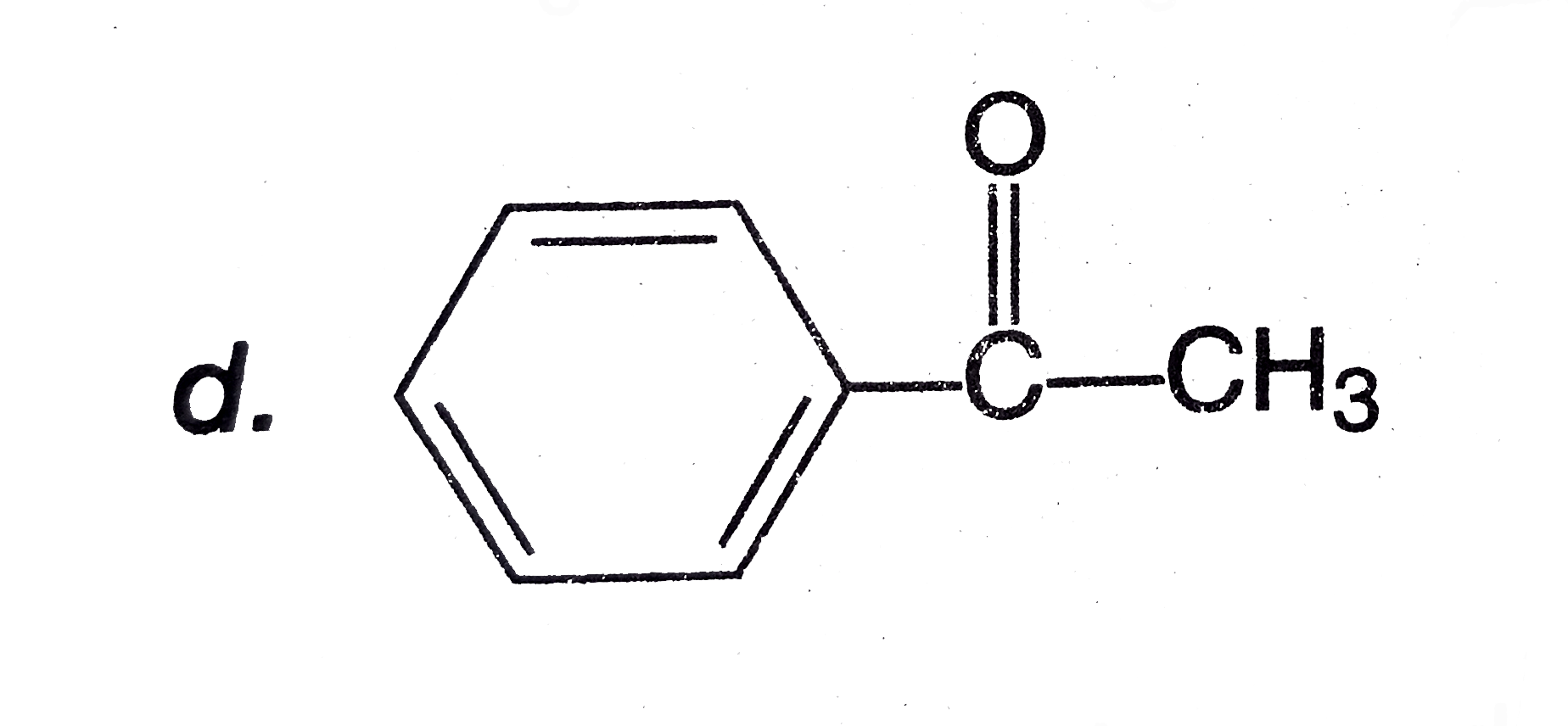Which of the following alkoxides is the most reactive nucleophile?
CH3O−
C6H5O−
(CH3)2CHO−
(CH3)3CO−
The correct Answer is:A
To determine which alkoxide is the most reactive nucleophile among the given options, we need to analyze the structure and steric hindrance of each alkoxide ion. The options provided are:
1. CH₃O⁻ (methoxide)
2. C₆H₅O⁻ (phenoxide)
3. (CH₃)₂CHO⁻ (isopropoxide)
4. (CH₃)₃CO⁻ (tert-butoxide)
Step 1: Analyze the Alkoxides
- CH₃O⁻ (Methoxide): This alkoxide has a small methyl group, which means it has low steric hindrance. It is a strong nucleophile because it can easily approach the electrophile.
- C₆H₅O⁻ (Phenoxide): The phenyl group is bulky, which introduces steric hindrance. This makes it less reactive as a nucleophile compared to methoxide.
- (CH₃)₂CHO⁻ (Isopropoxide): This alkoxide has two methyl groups attached to the carbon, which increases steric hindrance slightly but still allows for nucleophilic attack. However, it is less reactive than methoxide.
- (CH₃)₃CO⁻ (Tert-butoxide): This alkoxide has three bulky methyl groups, which significantly increases steric hindrance, making it the least reactive nucleophile among the options.
Step 2: Compare the Reactivity
- The reactivity of nucleophiles generally decreases with increasing steric hindrance. Therefore, we can rank the alkoxides based on their steric hindrance and nucleophilic reactivity:
1. CH₃O⁻ (least hindered, most reactive)
2. (CH₃)₂CHO⁻ (moderately hindered)
3. C₆H₅O⁻ (more hindered due to the phenyl group)
4. (CH₃)₃CO⁻ (most hindered, least reactive)
Step 3: Conclusion
Based on the analysis, the most reactive nucleophile among the given alkoxides is CH₃O⁻ (methoxide).
2. C₆H₅O⁻ (phenoxide)
3. (CH₃)₂CHO⁻ (isopropoxide)
4. (CH₃)₃CO⁻ (tert-butoxide)
- CH₃O⁻ (Methoxide): This alkoxide has a small methyl group, which means it has low steric hindrance. It is a strong nucleophile because it can easily approach the electrophile.
- C₆H₅O⁻ (Phenoxide): The phenyl group is bulky, which introduces steric hindrance. This makes it less reactive as a nucleophile compared to methoxide.
- The reactivity of nucleophiles generally decreases with increasing steric hindrance. Therefore, we can rank the alkoxides based on their steric hindrance and nucleophilic reactivity:
1. CH₃O⁻ (least hindered, most reactive)
2. (CH₃)₂CHO⁻ (moderately hindered)
3. C₆H₅O⁻ (more hindered due to the phenyl group)
4. (CH₃)₃CO⁻ (most hindered, least reactive)
Based on the analysis, the most reactive nucleophile among the given alkoxides is CH₃O⁻ (methoxide).
Topper's Solved these Questions
- ALCOHOL, PHENOL AND ETHERSBOOK - R SHARMACHAPTER - ALCOHOL, PHENOL AND ETHERSEXERCISE - Quation Bank(Building the knowledge) Level IV
14 Videos
- ALCOHOL, PHENOL AND ETHERSBOOK - R SHARMACHAPTER - ALCOHOL, PHENOL AND ETHERSEXERCISE - PHENOLS (I)
10 Videos
- ALCOHOL, PHENOL AND ETHERSBOOK - R SHARMACHAPTER - ALCOHOL, PHENOL AND ETHERSEXERCISE - Quation Bank(Building the knowledge) Level II
28 Videos
- AMINESBOOK - R SHARMACHAPTER - AMINESEXERCISE - Archives
36 Videos
Similar Questions
Knowledge Check
Which of the following halogens is the most reactive?
ACl2BBrCI2DF2Which of the following compounds is the most reactive nucleophilic addtion reaction ?
AO∣∣CH3−C−HBO∣∣CH3−C−H3C D
D
Which of the following halideso is most reactive towards nucleophilic substitution reaction?
AC2H5BrBC2H5ClCC2H5FDC2H5I
Which of the following haloalkanes is most reactive ?
View SolutionWhich of the following phosphorus is the most reactive?
View SolutionWhich of the following metals is the most reactive metal?
View SolutionWhich of the following halide is most reactive towards Nucleophilic substitution reactions ?
View SolutionWhich of the following haloalkanes is most reactive?
View Solution
